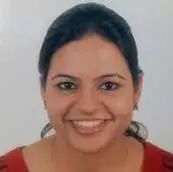- Home
- Medical news & Guidelines
- Anesthesiology
- Cardiology and CTVS
- Critical Care
- Dentistry
- Dermatology
- Diabetes and Endocrinology
- ENT
- Gastroenterology
- Medicine
- Nephrology
- Neurology
- Obstretics-Gynaecology
- Oncology
- Ophthalmology
- Orthopaedics
- Pediatrics-Neonatology
- Psychiatry
- Pulmonology
- Radiology
- Surgery
- Urology
- Laboratory Medicine
- Diet
- Nursing
- Paramedical
- Physiotherapy
- Health news
- Fact Check
- Bone Health Fact Check
- Brain Health Fact Check
- Cancer Related Fact Check
- Child Care Fact Check
- Dental and oral health fact check
- Diabetes and metabolic health fact check
- Diet and Nutrition Fact Check
- Eye and ENT Care Fact Check
- Fitness fact check
- Gut health fact check
- Heart health fact check
- Kidney health fact check
- Medical education fact check
- Men's health fact check
- Respiratory fact check
- Skin and hair care fact check
- Vaccine and Immunization fact check
- Women's health fact check
- AYUSH
- State News
- Andaman and Nicobar Islands
- Andhra Pradesh
- Arunachal Pradesh
- Assam
- Bihar
- Chandigarh
- Chattisgarh
- Dadra and Nagar Haveli
- Daman and Diu
- Delhi
- Goa
- Gujarat
- Haryana
- Himachal Pradesh
- Jammu & Kashmir
- Jharkhand
- Karnataka
- Kerala
- Ladakh
- Lakshadweep
- Madhya Pradesh
- Maharashtra
- Manipur
- Meghalaya
- Mizoram
- Nagaland
- Odisha
- Puducherry
- Punjab
- Rajasthan
- Sikkim
- Tamil Nadu
- Telangana
- Tripura
- Uttar Pradesh
- Uttrakhand
- West Bengal
- Medical Education
- Industry
Rare Disease Show Episode 22: Understanding Amyloidosis with Dr Sanju Daniel John - Video
Overview
Medical Dialogues presents a rare disease series, delving into the realm of uncommon medical conditions. Rare diseases are medical conditions that affect only a small percentage of the population.
Throughout this series, we'll discuss these rare diseases in various episodes, with medical experts providing clear explanations and insights.
Rare Disease Show Episode 21: In today's show we will cover Amyloidosis.
Amyloidosis is a rare disease caused by the build-up of abnormal proteins called amyloids in organs and tissues. These amyloid deposits can affect various organs, including the heart, kidneys, liver, and nervous system, disrupting their normal function.
Symptoms vary depending on the affected organ, but may include fatigue, swelling, and organ dysfunction. Treatment focuses on managing symptoms, halting amyloid production, and preventing further damage, with options including chemotherapy, stem cell transplants, and medications to reduce amyloid production.Early diagnosis is crucial for better outcomes.
In this episode, Dr Sanju Daniel John, Consultant in Internal Medicine at Apollo Adlux Hospital, Angamaly, Ernakulam shares his insights by addressing questions asked by the Medical Dialogues team-
1. Can you explain what amyloidosis is, why is it classified as a rare disease?
2. What are the most common forms of amyloidosis that you encounter in clinical practice?
3. What are the key diagnostic steps you take when you suspect a patient might have amyloidosis?
4. How important is a tissue biopsy in confirming an amyloidosis diagnosis? Are there non-invasive diagnostic tools that can also be effective?
5. Could you describe the pathophysiology behind amyloidosis? How do amyloid deposits disrupt normal tissue function?
6. How does amyloid fibril deposition affect organs differently (e.g., kidneys, heart, nervous system)?
7. What are the treatment options available for patients with amyloidosis, and how do you decide on the best course of treatment?
8. What is the role of chemotherapy and stem cell transplant in treating systemic amyloidosis?
9. How do you manage patients with cardiac amyloidosis? Are there any recent advancements in treatment for this specific form?
10. How do you approach the management of organ involvement, such as renal or liver amyloidosis, to prevent further damage?
11. What are some of the most challenging aspects of managing patients with amyloidosis from a clinical perspective?




